
Steel is strong and cost effective, and steel is the most widely used metal worldwide. It is easily welded and fabricated by common methods. It is recyclable and magnetic. At Metals4uOnline, we take pride in selling top quality steel direct to you, and shipping it straight to your door.

Steel Angle is a 90 degree section that is specified by the outside length of...

Steel Square Tube and Rectangular Tubing are made from low carbon steel, widely used for...

Steel Channel is a “C” shaped product for a variety of uses. The size is...

Hot Rolled Steel sheet is used for simple bending and welding. Cold Rolled Commercial Quality...

HR steel plate, or hot rolled steel plate, is a type of steel plate that...

Weathering steel, often called “Corten steel”, is a type of steel alloy designed to form...

A steel floor plate is a flat piece of carbon steel with a raised pattern...

Schedule 40 Steel Pipe produced to a variety of standard Nominal Pipe Sizes (NPS). While...

Steel Round Tube is the most economical of the round tubes. It can be HREW...

Steel Flat Bar is a rectangular shape bar made of either hot-rolled steel, or cold-rolled steel. Hot-rolled...

Steel Round Bar is a solid circular bar that is always specified as an Outside...

A steel square bar is a solid metal bar with a square cross-section that is used...

Steel all-thread, also known as threaded rod or threaded stud, is a fastener with a...

Steel expanded metal is a sheet of steel that’s been stretched and slit to create...

Steel perforated sheet metal is a sheet of steel that has been punched with a...

Steel wire mesh is a screen made of steel wires that are welded together to form...

Bar grating has many uses, including: Flooring: Bar grating is a popular choice for industrial-style flooring...

Steel roofing is a type of metal roofing that’s made from steel sheets and is often...

Our Steel Economy Value Packs are pre-packaged in 4 foot (48″) lengths. Shipped straight to...
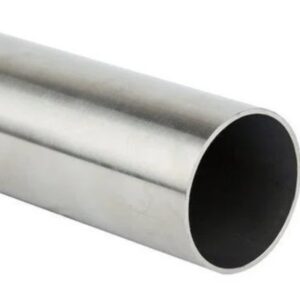
SRT41301250083
SHOP THIS ITEM $10.00 – $52.00Price range: $10.00 through $52.00 Select options This product has multiple variants. The options may be chosen on the product page
SRT41301500083
SHOP THIS ITEM $12.00 – $64.00Price range: $12.00 through $64.00 Select options This product has multiple variants. The options may be chosen on the product page
SRT41301625083
SHOP THIS ITEM $16.00 – $71.00Price range: $16.00 through $71.00 Select options This product has multiple variants. The options may be chosen on the product page
SRT41301750083
SHOP THIS ITEM $18.00 – $79.00Price range: $18.00 through $79.00 Select options This product has multiple variants. The options may be chosen on the product page
SRT41302000083
SHOP THIS ITEM $24.00 – $106.00Price range: $24.00 through $106.00 Select options This product has multiple variants. The options may be chosen on the product page
SRTDOM500065
SHOP THIS ITEM $3.30 – $19.80Price range: $3.30 through $19.80 Select options This product has multiple variants. The options may be chosen on the product page
SRTDOM500120
SHOP THIS ITEM $6.60 – $39.60Price range: $6.60 through $39.60 Select options This product has multiple variants. The options may be chosen on the product page
SRTDOM625065
SHOP THIS ITEM $4.40 – $26.40Price range: $4.40 through $26.40 Select options This product has multiple variants. The options may be chosen on the product page
SRTDOM625120
SHOP THIS ITEM $6.75 – $39.25Price range: $6.75 through $39.25 Select options This product has multiple variants. The options may be chosen on the product page
SRTDOM750065
SHOP THIS ITEM $5.50 – $33.00Price range: $5.50 through $33.00 Select options This product has multiple variants. The options may be chosen on the product page
SRTDOM750120
SHOP THIS ITEM $9.35 – $56.10Price range: $9.35 through $56.10 Select options This product has multiple variants. The options may be chosen on the product page
SRTDOM750188
SHOP THIS ITEM $10.49 – $62.95Price range: $10.49 through $62.95 Select options This product has multiple variants. The options may be chosen on the product page
SRTDOM875065
SHOP THIS ITEM $7.20 – $43.20Price range: $7.20 through $43.20 Select options This product has multiple variants. The options may be chosen on the product page
SRTDOM875120
SHOP THIS ITEM $12.10 – $72.60Price range: $12.10 through $72.60 Select options This product has multiple variants. The options may be chosen on the product page
SRTDOM875156
SHOP THIS ITEM $15.40 – $92.40Price range: $15.40 through $92.40 Select options This product has multiple variants. The options may be chosen on the product page
SRTDOM1000065
SHOP THIS ITEM $6.80 – $35.80Price range: $6.80 through $35.80 Select options This product has multiple variants. The options may be chosen on the product page
SRTDOM1000095
SHOP THIS ITEM $9.40 – $56.40Price range: $9.40 through $56.40 Select options This product has multiple variants. The options may be chosen on the product page
SRTDOM1000120
SHOP THIS ITEM $10.67 – $64.02Price range: $10.67 through $64.02 Select options This product has multiple variants. The options may be chosen on the product page
SRTDOM1000156
SHOP THIS ITEM $15.40 – $92.40Price range: $15.40 through $92.40 Select options This product has multiple variants. The options may be chosen on the product page
SRTDOM1000250
SHOP THIS ITEM $20.35 – $122.10Price range: $20.35 through $122.10 Select options This product has multiple variants. The options may be chosen on the product page
SRTDOM1125120
SHOP THIS ITEM $15.00 – $85.00Price range: $15.00 through $85.00 Select options This product has multiple variants. The options may be chosen on the product page
SRTDOM1250065
SHOP THIS ITEM $7.50 – $45.00Price range: $7.50 through $45.00 Select options This product has multiple variants. The options may be chosen on the product page
SRTDOM1250120
SHOP THIS ITEM $14.30 – $85.80Price range: $14.30 through $85.80 Select options This product has multiple variants. The options may be chosen on the product page
SRTDOM1250188
SHOP THIS ITEM $20.50 – $123.00Price range: $20.50 through $123.00 Select options This product has multiple variants. The options may be chosen on the product page
SRTDOM1250250
SHOP THIS ITEM $25.00 – $145.00Price range: $25.00 through $145.00 Select options This product has multiple variants. The options may be chosen on the product page
SRTDOM1375065
SHOP THIS ITEM $8.50 – $47.00Price range: $8.50 through $47.00 Select options This product has multiple variants. The options may be chosen on the product page
SRTDOM1375120
SHOP THIS ITEM $14.30 – $85.80Price range: $14.30 through $85.80 Select options This product has multiple variants. The options may be chosen on the product page
SRTDOM1375250
SHOP THIS ITEM $23.20 – $139.20Price range: $23.20 through $139.20 Select options This product has multiple variants. The options may be chosen on the product page
SRTDOM1500065
SHOP THIS ITEM $9.00 – $54.00Price range: $9.00 through $54.00 Select options This product has multiple variants. The options may be chosen on the product page
SRTDOM1500120
SHOP THIS ITEM $14.85 – $89.10Price range: $14.85 through $89.10 Select options This product has multiple variants. The options may be chosen on the product page
SRTDOM1500188
SHOP THIS ITEM $23.98 – $143.88Price range: $23.98 through $143.88 Select options This product has multiple variants. The options may be chosen on the product page
SPI1240
SHOP THIS ITEM $3.98 – $35.00Price range: $3.98 through $35.00 Select options This product has multiple variants. The options may be chosen on the product page
SPI3440
SHOP THIS ITEM $5.00 – $54.00Price range: $5.00 through $54.00 Select options This product has multiple variants. The options may be chosen on the product page
SPI140
SHOP THIS ITEM $2.42 – $41.55Price range: $2.42 through $41.55 Select options This product has multiple variants. The options may be chosen on the product page
(1.660" od x 0.140" wall = 1.380" id)*
SPI11440
SHOP THIS ITEM $4.85 – $23.10Price range: $4.85 through $23.10 Select options This product has multiple variants. The options may be chosen on the product page
SCH8214CP
SHOP THIS ITEM $85.66 Add to cart
SCHPURLIN4214
SHOP THIS ITEM $57.87 Add to cart
SCHCPR4
SHOP THIS ITEM $53.81 Add to cart
SCH6214GACEEPURLIN
SHOP THIS ITEM $74.62 Add to cart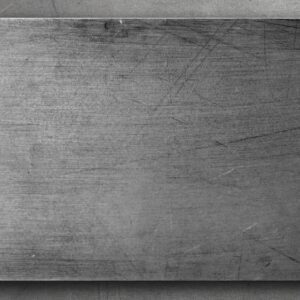
SPL316
SHOP THIS ITEM $22.66 – $106.92Price range: $22.66 through $106.92 Select options This product has multiple variants. The options may be chosen on the product page
SCHCPR6
SHOP THIS ITEM $63.19 Add to cart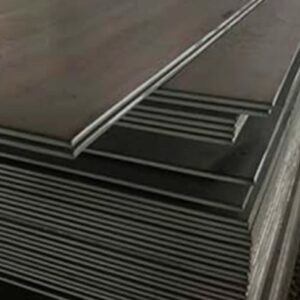
SPL14
SHOP THIS ITEM $25.21 – $137.52Price range: $25.21 through $137.52 Select options This product has multiple variants. The options may be chosen on the product page
SPL38
SHOP THIS ITEM $20.35 – $154.07Price range: $20.35 through $154.07 Select options This product has multiple variants. The options may be chosen on the product page


SSH16
SHOP THIS ITEM $12.50 – $40.00Price range: $12.50 through $40.00 Select options This product has multiple variants. The options may be chosen on the product page
SSH14
SHOP THIS ITEM $13.13 – $47.50Price range: $13.13 through $47.50 Select options This product has multiple variants. The options may be chosen on the product page
SSH12
SHOP THIS ITEM $14.38 – $62.50Price range: $14.38 through $62.50 Select options This product has multiple variants. The options may be chosen on the product page

SSHCR24-R
SHOP THIS ITEM $104.73 – $130.91Price range: $104.73 through $130.91 Select options This product has multiple variants. The options may be chosen on the product page
SAT789B7
SHOP THIS ITEM $13.95 – $28.91Price range: $13.95 through $28.91 Select options This product has multiple variants. The options may be chosen on the product page
SAT3816
SHOP THIS ITEM $5.21 – $7.92Price range: $5.21 through $7.92 Select options This product has multiple variants. The options may be chosen on the product page
SSH10
SHOP THIS ITEM $15.63 – $77.50Price range: $15.63 through $77.50 Select options This product has multiple variants. The options may be chosen on the product page
SWM112112135
SHOP THIS ITEM $64.88 – $92.32Price range: $64.88 through $92.32 Select options This product has multiple variants. The options may be chosen on the product page
SWM22188
SHOP THIS ITEM $116.90 – $139.62Price range: $116.90 through $139.62 Select options This product has multiple variants. The options may be chosen on the product page
SWMS22250
SHOP THIS ITEM $77.20 – $110.80Price range: $77.20 through $110.80 Select options This product has multiple variants. The options may be chosen on the product page

SPLCORTEN316
SHOP THIS ITEM $82.00 – $220.00Price range: $82.00 through $220.00 Select options This product has multiple variants. The options may be chosen on the product page
SPLCORTEN250
SHOP THIS ITEM $105.00 – $296.00Price range: $105.00 through $296.00 Select options This product has multiple variants. The options may be chosen on the product page
SUEDGING18
SHOP THIS ITEM $11.00 – $22.00Price range: $11.00 through $22.00 Select options This product has multiple variants. The options may be chosen on the product page
SUEDGING5161
SHOP THIS ITEM $11.00 – $22.00Price range: $11.00 through $22.00 Select options This product has multiple variants. The options may be chosen on the product page
SPE161438
SHOP THIS ITEM $50.48 – $131.44Price range: $50.48 through $131.44 Select options This product has multiple variants. The options may be chosen on the product page
SPE111438
SHOP THIS ITEM $62.24 – $166.72Price range: $62.24 through $166.72 Select options This product has multiple variants. The options may be chosen on the product page




SSXMCLASICO
SHOP THIS ITEM $30.00 – $70.00Price range: $30.00 through $70.00 Select options This product has multiple variants. The options may be chosen on the product page
SSXMGRANADA
SHOP THIS ITEM $30.00 – $70.00Price range: $30.00 through $70.00 Select options This product has multiple variants. The options may be chosen on the product page

SSXMGOTICO
SHOP THIS ITEM $30.00 – $67.20Price range: $30.00 through $67.20 Select options This product has multiple variants. The options may be chosen on the product page
SSXMINGLES
SHOP THIS ITEM $30.00 – $70.00Price range: $30.00 through $70.00 Select options This product has multiple variants. The options may be chosen on the product page
SSXMALCATRAZ
SHOP THIS ITEM $30.00 – $70.00Price range: $30.00 through $70.00 Select options This product has multiple variants. The options may be chosen on the product page
SBG3161G
SHOP THIS ITEM $231.33 Add to cart
SBG316114G
SHOP THIS ITEM $234.27 Add to cart
SBG316112G
SHOP THIS ITEM $309.73 Add to cart
SBG3161GS
SHOP THIS ITEM $192.64 Add to cart
PSCREW1
SHOP THIS ITEM $37.50 Add to cart
PSCREW
SHOP THIS ITEM $37.50 Add to cart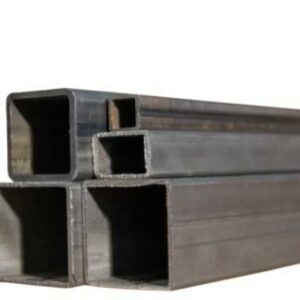
SST121216
SHOP THIS ITEM $1.76 – $50.72Price range: $1.76 through $50.72 Select options This product has multiple variants. The options may be chosen on the product page
SST585816
SHOP THIS ITEM $1.93 – $29.80Price range: $1.93 through $29.80 Select options This product has multiple variants. The options may be chosen on the product page
SST343411
SHOP THIS ITEM $5.00 – $17.00Price range: $5.00 through $17.00 Select options This product has multiple variants. The options may be chosen on the product page
SST343416
SHOP THIS ITEM $2.08 – $26.84Price range: $2.08 through $26.84 Select options This product has multiple variants. The options may be chosen on the product page
SST1116
SHOP THIS ITEM $3.50 – $13.00Price range: $3.50 through $13.00 Select options This product has multiple variants. The options may be chosen on the product page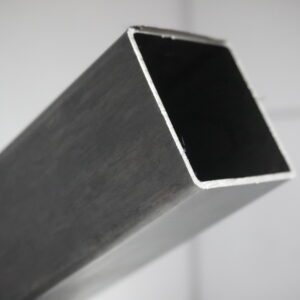
SST1114
SHOP THIS ITEM $2.67 – $10.52Price range: $2.67 through $10.52 Select options This product has multiple variants. The options may be chosen on the product page
SST1111
SHOP THIS ITEM $3.22 – $14.51Price range: $3.22 through $14.51 Select options This product has multiple variants. The options may be chosen on the product page
SST1214
SHOP THIS ITEM $3.45 – $15.23Price range: $3.45 through $15.23 Select options This product has multiple variants. The options may be chosen on the product page
SST1211
SHOP THIS ITEM $4.34 – $21.55Price range: $4.34 through $21.55 Select options This product has multiple variants. The options may be chosen on the product page
SST1311
SHOP THIS ITEM $5.46 – $30.26Price range: $5.46 through $30.26 Select options This product has multiple variants. The options may be chosen on the product page
SST11411414
SHOP THIS ITEM $8.06 – $29.85Price range: $8.06 through $29.85 Select options This product has multiple variants. The options may be chosen on the product page
SST11411411
SHOP THIS ITEM $3.78 – $18.19Price range: $3.78 through $18.19 Select options This product has multiple variants. The options may be chosen on the product page
SST11211214
SHOP THIS ITEM $3.46 – $15.27Price range: $3.46 through $15.27 Select options This product has multiple variants. The options may be chosen on the product page
SST112112188
SHOP THIS ITEM $8.00 – $30.00Price range: $8.00 through $30.00 Select options This product has multiple variants. The options may be chosen on the product page
SST112112250
SHOP THIS ITEM $9.00 – $43.00Price range: $9.00 through $43.00 Select options This product has multiple variants. The options may be chosen on the product page
SST11211211
SHOP THIS ITEM $7.24 – $43.45Price range: $7.24 through $43.45 Select options This product has multiple variants. The options may be chosen on the product page
SST112311
SHOP THIS ITEM $6.56 – $39.36Price range: $6.56 through $39.36 Select options This product has multiple variants. The options may be chosen on the product pageSTEEL is an alloy made of mainly iron and carbon, steel finds applications in a wide range of situations, primarily due to its high tensile strength as well as its low cost. In addition to iron and carbon, other elements that may be present in the alloy include, but are not limited to, tungsten, chromium, nickel, molybdenum, titanium, cobalt, boron, vanadium, niobium, copper, phosphorous, silicon, sulfur, and manganese. The amounts of these elements will vary and their concentration in the alloy will determine the properties of steel.
STEEL is not a new material by any stretch of imagination. It has been in use since at least 1800 B.C., i.e., for at least the last four millennia. However, it wasn’t until the 17th century that steel began being used extensively. Today, over a billion tons of steel is produced every year. This quantity of production has been made possible thanks to evolution in the steel making process over the last few centuries.
In the year 1855, Henry Bessemer, an Englishman, introduced first steel making industrial process that resulted in inexpensive mass production of steel. This method is known today as the Bessemer process. The Siemens-Martin process was another process that came up around the same time and which could also mass produce steel at low costs. Today, however, these processes have become obsolete courtesy of a method that was developed during the 1950’s: basic oxygen steelmaking, also known as the Linz-Donawitz (which are Austrian towns) process. This method is similar to and an improved form of the Bessemer process.
As with other methods of producing steel, the basic oxygen steelmaking process utilizes pig iron from a blast furnace as its starting ingredient. The iron, which will be in molten state, is poured into a ladle. From the ladle, the iron is added to a vessel in basic oxygen furnace as needed. In the furnace, a lance is suspended above the vessel; this lance is water cooled. Through this, oxygen (not air, unlike in the Bessemer process) under high pressure is blown onto the iron at speeds faster than the speed of sound. After the blowing is complete, the vessel is tilted to pour out steel into another ladle. At this stage, a number of different elements may be added and further refining of steel may be done in order to give the alloy the desired properties.
The Metals market can be quite a lucrative investment today. Considering that we’ll always need metal is some form or another, wisely investing can yield solid returns on your investment.
* Prices subject to change without notice due to the Metals Market fluctuations.
* All ‘value length’ and ‘value pack’ item measurements are subject to a “mill tolerance”. A product may be produced several thousandths of an inch, either over or under the stated thickness, and still be within “mill tolerance”. This does NOT apply to Cut To Size items. Those will be +.125″, -0.00″ tolerances.



|
Pipe Size* |
O.D.
(in.) |
Schedule (10, 40, 80)
Wall Thickness (in.)** |
|||||
|---|---|---|---|---|---|---|---|
| Sch.10 | Sch.40 | Sch.80 | |||||
| Wall (in) | I.D. (in) | Wall (in) | I.D. (in) | Wall (in) | I.D. (in) | ||
| 1/8" | 0.41 od | 0.049 in | 0.312 id | 0.07 in | 0.269 id | ||
|
Weight (lbs/ft.) |
Steel | 0.183 lbs/ft | 0.247 lbs/ft | ||||
| Stainless | |||||||
| Aluminum | |||||||
| 1/4" | 0.54 od | 0.065 in | 0.410 id | 0.090 in | 0.364 id | 0.119 in | 0.302 id |
|
Weight (lbs/ft.) |
Steel | 0.333 lbs/ft | 0.429 lbs/ft | 0.535 lbs/ft | |||
| Stainless | |||||||
| Aluminum | 0.147 lbs/ft | ||||||
| 3/8" | 0.675 od | 0.065 in | 0.545 id | 0.091 in | 0.493 id | 0.126 in | 0.423 id |
|
Weight (lbs/ft.) |
Steel | 0.420 lbs/ft | 0.570 lbs/ft | 0.740 lbs/ft | |||
| Stainless | |||||||
| Aluminum | 0.196 lbs/ft | ||||||
| 1/2" | 0.840 od | 0.083 in | 0.674 id | 0.109 in | 0.622 id | 0.147 in | 0.546 id |
|
Weight (lbs/ft.) |
Steel | 0.670 lbs/ft | 0.850 lbs/ft | 1.090 lbs/ft | |||
| Stainless | |||||||
| Aluminum | 0.294 lbs/ft | 0.384 lbs/ft | |||||
| 3/4" | 1.050 od | 0.083 in | 0.884 id | 0.113 in | 0.824 id | 0.154 in | 0.742 id |
|
Weight (lbs/ft.) |
Steel | 0.86 lbs/ft | 1.13 lbs/ft | 1.48 lbs/ft | |||
| Stainless | |||||||
| Aluminum | 0.391 | 0.520 | |||||
| 1" | 1.315 od | 0.109 in | 1.097 id | 0.133 in | 1.049 id | 0.179 in | 0.957 id |
|
Weight (lbs/ft.) |
Steel | 1.41 lbs/ft | 1.68 lbs/ft | 2.17 lbs/ft | |||
| Stainless | |||||||
| Aluminum | 0.481 lbs/ft | 0.581 lbs/ft | 0.781 lbs/ft | ||||
| 1-1/4" | 1.66 od | 0.109 in | 1.442 id | 0.140 in | 1.380 id | 0.191 in | 1.278 id |
|
Weight (lbs/ft.) |
Steel | 1.81 lbs/ft | 2.27 lbs/ft | 3.00 lbs/ft | |||
| Stainless | |||||||
| Aluminum | 0.618 lbs/ft | 0.785 lbs/ft | 1.040 lbs/ft | ||||
| 1-1/2" | 1.90 od | 0.109 in | 1.682 id | 0.145 in | 1.610 id | 0.200 in | 1.500 id |
|
Weight (lbs/ft.) |
Steel | 2.09 lbs/ft | 2.72 lbs/ft | 3.63 lbs/ft | |||
| Stainless | |||||||
| Aluminum | 0.714 lbs/ft | 0.939 lbs/ft | 1.260 lbs/ft | ||||
| 2" | 2.375 od | 0.109 in | 2.157 id | 0.154 in | 2.067 id | 0.218 in | 1.939 id |
|
Weight (lbs/ft.) |
Steel | 2.64 lbs/ft | 3.66 lbs/ft | 5.03 lbs/ft | |||
| Stainless | |||||||
| Aluminum | 0.903 lbs/ft | 1.260 lbs/ft | 1.740 lbs/ft | ||||
| 2-1/2" | 2.875 od | 0.120 in | 2.635 id | 0.203 in | 2.469 id | 0.276 in | 2.323 id |
|
Weight (lbs/ft.) |
Steel | 3.53 lbs/ft | 5.80 lbs/ft | 7.67 lbs/ft | |||
| Stainless | |||||||
| Aluminum | 1.209 lbs/ft | 2.000 lbs/ft | |||||
| 3" | 3.50 od | 0.120 in | 3.26 id | 0.216 in | 3.068 id | 0.30 in | 2.90 id |
|
Weight (lbs/ft.) |
Steel | 4.34 lbs/ft | 7.58 lbs/ft | 10.26 lbs/ft | |||
| Stainless | |||||||
| Aluminum | 1.483 lbs/ft | 2.620 lbs/ft | 3.55 lbs/ft | ||||
| 3-1/2" | 4.00 od | 0.120 in | 3.76 id | 0.226 in | 3.550 id | 0.318 in | 3.360 id |
|
Weight (lbs/ft.) |
Steel | 4.98 lbs/ft | 9.12 lbs/ft | 12.52 lbs/ft | |||
| Stainless | |||||||
| Aluminum | 3.150 lbs/ft | 4.33 lbs/ft | |||||
| 4" | 4.50 od | 0.120 in | 4.26 id | 0.237 in | 4.026 id | 0.337 in | 3.826 id |
|
Weight (lbs/ft.) |
Steel | 5.62 lbs/ft | 10.80 lbs/ft | 15.00 lbs/ft | |||
| Stainless | |||||||
| Aluminum | 1.922 lbs/ft | 3.730 lbs/ft | 5.180 lbs/ft | ||||
| 5" | 5.563 od | 0.134 in | 5.295 id | 0.258 in | 5.047 id | 0.375 in | 4.813 id |
|
Weight (lbs/ft.) |
Steel | 7.78 lbs/ft | 14.63 lbs/ft | 20.80 lbs/ft | |||
| Stainless | |||||||
| Aluminum | 2.660 lbs/ft | 5.050 lbs/ft | 7.190 lbs/ft | ||||
| 6" | 6.625 od | 0.134 in | 6.357 id | 0.280 in | 6.065 id | 0.432 in | 5.761 id |
|
Weight (lbs/ft.) |
Steel | 9.30 lbs/ft | 18.99 lbs/ft | 28.60 lbs/ft | |||
| Stainless | |||||||
| Aluminum | 3.181 lbs/ft | 6.560 lbs/ft | 9.880 lbs/ft | ||||
| 8" | 8.625 od | 0.148 in | 8.329 id | 0.322 in | 7.981 id | 0.500 in | 7.625 id |
|
Weight (lbs/ft.) |
Steel | 13.41 lbs/ft | 28.58 lbs/ft | 43.43 lbs/ft | |||
| Stainless | |||||||
| Aluminum | 9.88 lbs/ft | 15.010 lbs/ft | |||||
|
*Nominal sizes apply - Pipe Size is the generic Industry Size Standard for reference only **Tolerances may vary slightly from each manufacturer |
|||||||

| Ga# | Sheet Steel | Galvanized Steel | Stainless Steel | Aluminum | Strip & Tubing | ||||
|---|---|---|---|---|---|---|---|---|---|
|
Ga (in.) |
Wgt (lb/ft2) |
Ga (in.) |
Wgt (lb/ft2) |
Ga (in.) |
Wgt (lb/ft2) |
Ga (in.) |
Wgt (lb/ft2) |
Ga (in.) |
|
| 38 | 0.0060 | 0.0062 | 0.0040 | ||||||
| 37 | 0.0064 | 0.0066 | 0.0045 | ||||||
| 36 | 0.0067 | 0.0070 | 0.0050 | 0.004 | |||||
| 35 | 0.0075 | 0.0078 | 0.0056 | 0.005 | |||||
| 34 | 0.0082 | 0.0086 | 0.0063 | 0.007 | |||||
| 33 | 0.0090 | 0.0094 | 0.0071 | 0.008 | |||||
| 32 | 0.0097 | 0.0102 | 0.0080 | 0.009 | |||||
| 31 | 0.0105 | 0.0109 | 0.0089 | 0.010 | |||||
| 30 | 0.0120 | 0.500 | 0.016 | 0.656 | 0.0125 | 0.0100 | 0.141 | 0.012 | |
| 29 | 0.0135 | 0.563 | 0.017 | 0.719 | 0.0141 | 0.0113 | 0.160 | 0.013 | |
| 28 | 0.0149 | 0.625 | 0.019 | 0.781 | 0.0156 | 0.0126 | 0.178 | 0.014 | |
| 27 | 0.0164 | 0.688 | 0.020 | 0.844 | 0.0172 | 0.0142 | 0.200 | 0.016 | |
| 26 | 0.0179 | 0.750 | 0.022 | 0.906 | 0.0187 | 0.756 | 0.0159 | 0.224 | 0.018 |
| 25 | 0.0209 | 0.875 | 0.025 | 1.031 | 0.0219 | 0.0179 | 0.253 | 0.020 | |
| 24 | 0.0239 | 1.000 | 0.028 | 1.156 | 0.0250 | 1.008 | 0.0201 | 0.284 | 0.022 |
| 23 | 0.0269 | 1.125 | 0.031 | 1.281 | 0.0281 | 0.0226 | 0.319 | 0.025 | |
| 22 | 0.0299 | 1.250 | 0.034 | 1.406 | 0.0312 | 1.26 | 0.0253 | 0.357 | 0.028 |
| 21 | 0.0329 | 1.375 | 0.037 | 1.531 | 0.0344 | 0.0285 | 0.402 | 0.032 | |
| 20 | 0.0359 | 1.500 | 0.040 | 1.656 | 0.0375 | 1.512 | 0.0320 | 0.452 | 0.035 |
| 19 | 0.0418 | 1.750 | 0.046 | 1.906 | 0.0437 | 0.0359 | 0.507 | 0.042 | |
| 18 | 0.0478 | 2.000 | 0.052 | 2.156 | 0.0500 | 2.016 | 0.0403 | 0.569 | 0.049 |
| 17 | 0.0538 | 2.250 | 0.058 | 2.406 | 0.0562 | 0.0453 | 0.639 | 0.058 | |
| 16 | 0.0598 | 2.500 | 0.064 | 2.656 | 0.0625 | 2.52 | 0.0508 | 0.717 | 0.065 |
| 15 | 0.0673 | 2.813 | 0.071 | 2.969 | 0.0703 | 0.0571 | 0.806 | 0.072 | |
| 14 | 0.0747 | 3.125 | 0.079 | 3.281 | 0.0781 | 3.15 | 0.0641 | 0.905 | 0.083 |
| 13 | 0.0897 | 3.750 | 0.093 | 3.906 | 0.0937 | 0.0720 | 1.016 | 0.095 | |
| 12 | 0.1046 | 4.375 | 0.108 | 4.531 | 0.1094 | 4.41 | 0.0808 | 1.140 | 0.109 |
| 11 | 0.1196 | 5.000 | 0.123 | 5.156 | 0.1250 | 5.04 | 0.0907 | 1.280 | 0.120 |
| 10 | 0.1345 | 5.625 | 0.138 | 5.781 | 0.1406 | 5.67 | 0.1019 | 1.438 | 0.134 |
| 9 | 0.1495 | 6.250 | 0.153 | 6.406 | 0.1562 | 0.1144 | 1.614 | 0.148 | |
| 8 | 0.1644 | 6.875 | 0.168 | 7.031 | 0.1719 | 6.93 | 0.1285 | 1.813 | 0.165 |
| 7 | 0.1793 | 7.500 | 0.1875 | 7.871 | 0.1443 | 2.036 | 0.180 | ||
| 6 | 0.1943 | 8.125 | 0.2031 | 0.1620 | 2.286 | 0.203 | |||
| 5 | 0.2092 | 8.750 | 0.2187 | 0.1819 | 0.220 | ||||
| 4 | 0.2242 | 9.375 | 0.2344 | 0.2043 | 0.238 | ||||
| 3 | 0.2391 | 10.00 | 0.2500 | 0.2294 | 0.259 | ||||
| 2 | 0.2656 | 0.2576 | 0.284 | ||||||
| 1 | 0.2812 | 0.2893 | 0.300 | ||||||